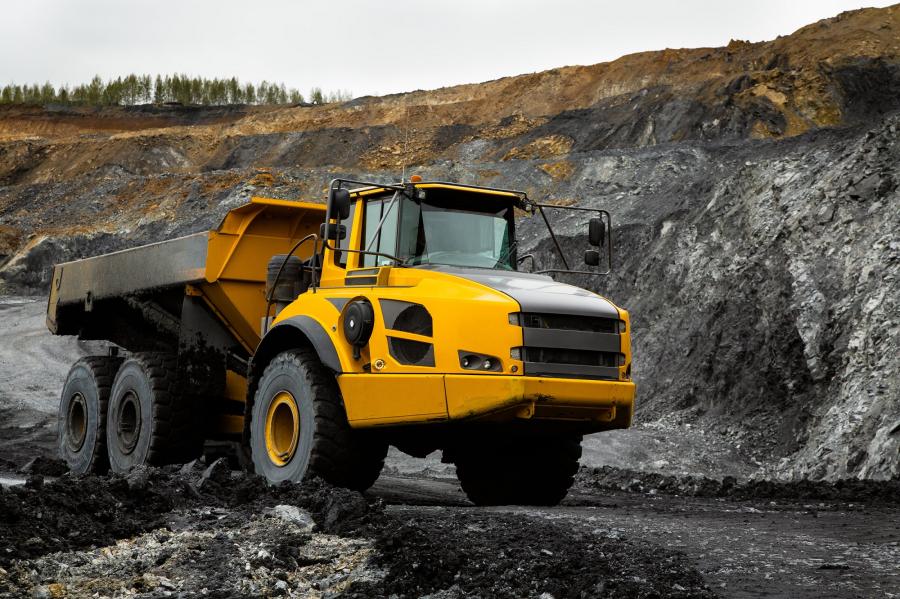
Mon July 31, 2023
Pailton Engineering
In the mid-1990s Caterpillar changed its approach to automation in mining.
A decade after it began a pioneering research program to drive the tech forward, the company realised that the sector was not ready for automation. Instead, it focused on the building blocks that would need to be put in place to make automation possible in future.
Roger Brereton, head of sales at steering system manufacturer Pailton Engineering, assesses whether the construction sector is finally ready for autonomous driving.
In 1985, Caterpillar began a research program into automation. A little over a decade later, it demonstrated two autonomous trucks running at the Caterpillar Proving Ground in Tucson, Ariz.
At this stage it was clear the company was well ahead of its time, but the feeling was that the sector was not ready for automation. This brought an end to the first generation of automation.
In the next phase, rather than continuing to focus on the development of the trucks, the engineers stepped back and began looking at the building blocks that would be needed to make automation a reality, such as improved GPS and on-board monitoring systems.
Today, Caterpillar remains a pioneer in this particular field of driverless tech. Currently, there are Command autonomous haulage system fleets operating at 17 mine locations around the world. However, Caterpillar faces stiff competition from other OEMs developing driverless off-highway vehicles.
Volvo Autonomous Solution (VAS) is one example of a company that is making inroads.
Partnering with Holcim, the company has developed an autonomous hauler that is currently being trialled at Holcim's limestone quarry in Switzerland and it hopes that this will be commercially available soon.
Do these technological developments mean the construction sector is finally ready to embrace automation after all these years?
A Challenging Terrain
The development of driverless vehicles has thrown up many novel engineering challenges that were not anticipated a decade ago, from user scepticism to the difficulties of developing an artificial intelligence (AI) that can respond correctly to situations that have never been encountered before, the so-called ‘‘edge case".
What is becoming clear in this story is that each sector throws up different challenges and opportunities. For example, the development of ‘‘robo taxis" was thwarted by the complexity of urban environments, but long-haul trucking, which involves more predictable journeys on long, straight roads, is now emerging as a key area for technological uptake.
In the construction sector, there are many different vehicles that fulfil different roles. This makes it difficult to generalize about the prospects for automation.
According to research by Arthur D Little associates, automation will play only a ‘‘minor role" in the near future, with the majority of vehicles remaining at level two for the next 10 to 15 years. In this context, level two autonomy refers to operator assistance, like auto-steering, technology which is already widely in use.
The report concluded that construction was a particularly difficult area for automation, because of complex and dynamic construction environments, the fact that machines are used for only limited periods of time and at changing locations, and the need for precise interplay between multiple machines.
Constructing a Positive Case
VAS has chosen to focus its energy on haulage systems, such as those found at quarries and mines, where the case for automation is strongest. These vehicles fulfil a single, simple function, they operate in a closed-off environment and involve no on-road use. In these instances, the case for automation is a good one.
Although the key determinant will always be cost and return on investment, the arguments here are becoming stronger. Autonomous mining is more efficient, thereby reducing overall costs. Near continuous utilization of machines and the elimination of shift change also enhance productivity. Improvements in cameras, sensors and data compression technology are all things that will help bring the cost down in the coming years.
Another key advantage is safety improvements, as these vehicles can remove the need for human operators in dangerous environments. According to Caterpillar, trucks equipped with its Command for hauling have moved more than three billion tonnes of material without a single lost-time injury.
One challenge for these vehicles is navigating inhospitable terrains. Even where these vehicles face only simple, repetitive routes in closed-off environments, they are often exposed to harsh under-chassis environments. As well as extensive testing to make sure the AI can cope with these conditions, the conventional vehicle components, such as the steering parts, also need to be tested extensively to ensure they are designed to last.
Although OEMs will be determined to reach a more competitive price point, compromising on the quality of something like a bevel box has the potential to raise the whole-life costs of vehicle ownership, thereby undermining the arguments about gains in productivity.
Things have come a long way since Caterpillar introduced its first research program into autonomous driving in 1985. In 2022, some of the world's leading OEMs have developed sophisticated driverless off-highway vehicles that are already successfully in operation at mines and quarries around the world. Driverless tech seems ideal for haulage vehicles, particularly in cases where its introduction can remove workers from unsafe environments. However, whether we can expect more widespread uptake across the sector remains to be seen.
Pailton Engineering supplies custom steering parts and full steering system for off-highway vehicles. For more information, visit pailton.com.
 Aggregate Equipment
Aggregate Equipment Articles
Articles Email Updates
Email Updates Sell Your Machines
Sell Your Machines

 Aggregate Equipment
Aggregate Equipment Aggregate Dealers
Aggregate Dealers Aggregate Articles
Aggregate Articles Email Updates
Email Updates Sell Your Machines
Sell Your Machines